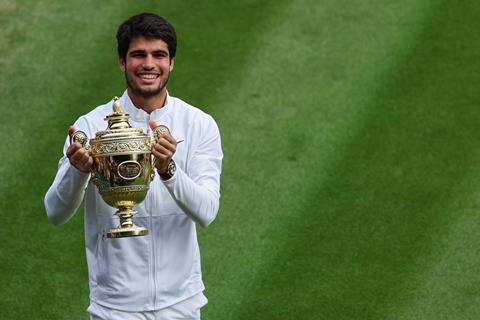Shira Jeczmien, founder and CEO of Screenshot Media, gives her advice on targeting younger viewers

It’s often assumed that there is nothing like an Olympic year to bring sports fans together. Picking your favourite underdog, basking in front of giant screens in pub gardens and just generally celebrating the sporting talents of the world’s top athletes create a unique atmosphere.
For older generations, this feast of live sporting competition remains a compelling proposition. Three-quarters of the 55-and-over demographic continue to delight in live events, according to YouGov, but this trend shifts dramatically amongst 18-24-year-olds, with only 31% regularly engaging with live sports.
Traditional sports have a core viewership and deliver excellently produced content for older generations to enjoy. But they’re missing out on the younger audience, who, despite shunning traditional formats, are still engaging with and loving sports.
What we’re seeing is that there’s an opportunity this summer for new players to win the hearts (and crucially eyes) of those fans looking for a new way to engage with sport.
On-pitch action
Some traditional sports have shown a willingness to update their viewing structure to reach younger audiences. Major League Baseball has shortened game time and the quickest form of cricket, The Hundred, makes a return to UK grounds this summer. Even the upcoming Paris Olympics are stressing their youthful appeal, penning an open letter to the Financial Times arguing that engagement will come through the inclusion of break dancing, skateboarding, and 3x3 basketball.
This is translating into a fresher approach to their social media activity too. The Hundred, for example, engages audiences consistently throughout the sport’s offseason. Utilising the power of short-form content on TikTok to show off the beautiful summer nights that form the backdrop of many a league game, The Hundred continues to drive interest year-round, capturing the feeling of the live event, not just the sport itself. During the season, it doesn’t fill its feed with highlights but rather works natively on TikTok, jumping onto relevant social media trends to showcase the best of the sport, its bright colours, personalities, and culture off the pitch.
But tinkering with the physical format of live sports is unlikely to prove the silver bullet that sees the next generation flooding the pitches.
When the final whistle blows
We are starting to see major sports and brands invest more heavily in the wider culture that is fueled by the on-pitch action, recognising that sports fans don’t suddenly lose interest when the final whistle blows.
Certain lower-league football clubs seem to have landed on a pretty effective formula for cultivating culture. Stormzy’s AFC Croydon Athletic and Ryan Reynolds and Rob McElhenney’s Wrexham FC have both positioned their clubs as pillars of the community, and they take this role very seriously. By fostering community and elevating the respective teams’ global coverage, they’re able to give the clubs a purpose beyond the action that happens on the pitch.
This strategy has shown that engagement isn’t just about the on-field event, but also about the shared experiences, stories, and identities that sports culture can foster across society.
Take fashion for example, increasingly a point of connection for sports brands looking to tap into the thriving sub-sports-culture that has young people at its heart. Look at Ferrari’s most recent spur into luxury fashion. This isn’t directly geared towards those watching Formula One live, but instead to those engaged in the culture of the sport that lives beyond the tracks.
There are also trends like blokecore, born on TikTok, which is now a global fashion category and features on brand’s store pages like Adidas’. The vintage football jersey, baggy jeans, and Sambas are the core’s staples, and adidas has positioned itself as the gateway brand to this sports fashion trend.
Athletes front and centre
Choosing to put athletes centre stage can also be an effective way for brands and sports to drive engagement. Athlete-first engagement, especially in a time where the lives of athletes are more visible than ever, has opened up opportunities for engagement beyond the sport itself.
Formula One is a case in point. A recent YouGov report revealed that amongst 18-24-year-olds, 20% were F1 fans, but 30% watched Netflix’s Drive to Survive series that took fans behind the scenes on the circuit. This kind of figure is indicative of the fact that the drama, personalities and community of Formula One are actually of more interest to this next-generation audience than the races themselves.
Boxing and wrestling are sports that have similarly embraced athlete-first campaigning to engage next-gen audiences. From the reality TV series The Ultimate Fighter, which takes viewers behind the scenes of athletes’ lives, to the WWE’s YouTuber-turned-wrestler Logan Paul. The blend of influencers and original stars stepping into the WWE ring has succeeded in driving more eyeballs to the sport.
Live sports are going nowhere. Millions will tune in to the Euros and Olympics this summer. But the opportunity for brands extends far beyond the action on the pitch, especially for those wanting to engage with younger demographics. Through social activations, cultural moments and community engagement around sports, as well as employing smart branding and memorable experiences, sports can reach new audiences long after the final whistle blows.

Shira Jeczmien is founder and CEO of Screenshot Media





No comments yet